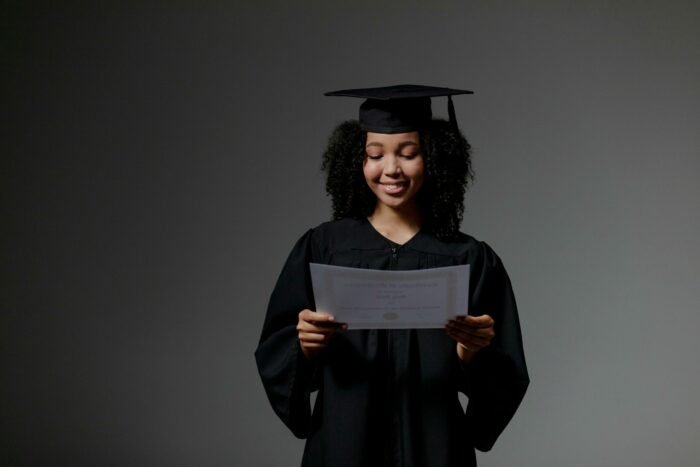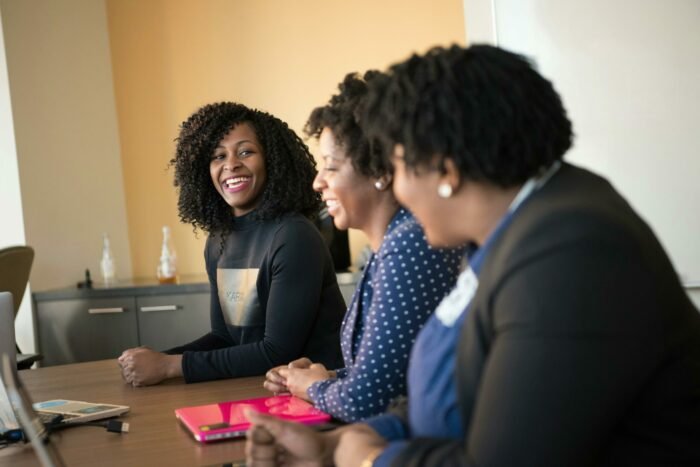For decades, people have debated whether learning style is best for whatever piece of information. While some research implies that visual learners benefit more from pictures and other visuals, others believe that auditory learners benefit more from the spoken word. In this post, we’ll look at the benefits and drawbacks of each learning style, as well as how to use them effectively in your own learning.
Visual Learning vs Auditory Learning
What Is Visual Learning?
In recent years, visual learning has grown in popularity as a method of learning. It differs from traditional learning in that it emphasizes pictures over words and text as the major learning instrument.
Visual learning is predicated on the idea that the human brain understands visuals faster and more easily than words. It also enables people to learn more efficiently because they can see what they are learning rather than relying on memory.
It is a very effective method of learning. People with dyslexia and vision problems may be able to use visual learning since it requires a distinct set of abilities from those with which they struggle. It is ideal for children and people who have difficulty reading, writing, or comprehending.
Learning visually is easy on the mind, therefore it benefits people who have trouble remembering things or paying attention. Visual learning can be used in any subject, but it is most commonly utilized in mathematics, science, and English.
What Is Auditory Learning?
A brief history of the phrase “auditory learning” Auditory learning is a relatively new phrase that was initially used to describe learning by listening in the 1940s and 1950s. Prior to this point, learning was thought to be a type of passive receiving (as opposed to active or productive reception). Passive listening was considered to be a sort of “hearing,” whereas active listening was considered to be a form of “speaking”.
Auditory learning is the process of learning to interpret and respond to essential communication sounds. Hearing, speech perception and production, language acquisition and development, and sound localization are all examples of auditory learning. Auditory learning is the most complicated of human learning processes.
It is split into two stages: encoding and consolidation. The initial representation of an auditory event as a pattern of brain activity occurs in the first phase. The second phase involves memory consolidation, which stabilizes and makes available the encoded representations for subsequent use.
Difference between Visual Learning and Auditory Learning
1. Auditory learners can learn through listening, whereas visual learners can learn through observing. Visual learners learn best by seeing visuals or images, whereas auditory learners learn best by hearing and reading words.
2. Visual learners, as opposed to auditory learners, learn best by watching and looking at visuals. Listening to stories, lectures, and speeches is the best way for auditory learners to learn.
3. Visual learners are more artistic, innovative, and creative than auditory learners. They are more prone to appreciate art and music. Science and mathematics are more appealing to auditory learners.
4. Visual learners are less analytical and rational than auditory learners. Auditory learners are more likely to excel at reading, writing, and public speaking. Visual learners are more likely to be adept at problem-solving, decision-making, and creative thinking.
5. Auditory learners are quick to learn. When they hear something, it helps them remember it better. Visual learners can pick up information fast. When they see something, it helps them remember it better.
6. Auditory learners learn more quickly than visual learners. While listening, kids can learn. Visual learners can learn while they observe.
The Benefits of Visual Learning
-
Visual Learning Boosts Your Brainpower
The brain is an amazing organ. It’s the most complicated machine we’ve ever seen, and yet it’s capable of producing something as simple as a grin. That is one of the numerous reasons why visual learning is so effective.
We have an intrinsic ability to process visuals, and connecting those images with something meaningful to us is a game changer for our brains. If you want to improve your brainpower, visual learning is a terrific approach to do it.
-
Make Learning Fun
People with a higher visual memory find it easier to learn things visually. Visual learning can be enjoyable. When you have a visual reference, learning becomes much easier.
There are numerous methods to employ visual learning to make learning more enjoyable. As an example, Make use of flash cards. Flashcards can be created in a variety of ways.
Construction paper, poster board, or any other material can be used to make them. You can also design your own. Draw drawings on the card with markers or crayons. Distinct colors might be used to indicate different aspects of the subject. You can also use the software to make your own flashcards.
-
Build Memory
Visual learning is a type of learning that employs images, movies, animations, and other visual elements to deliver knowledge. It is commonly utilized in schools, universities, and training program, but it can also help with memory, attention, and concentration.
The goal of visual learning is to make knowledge more memorable by utilizing the brain’s natural propensity to remember images and other visual elements.
Visual learning can be utilized as a teaching method or as a learning enhancement tool. Some of the most common applications of visual learning are as follows: Make use of photographs as memory aids. Take pictures of things you need to remember, such as recipes, medical procedures, or shopping lists.
When you need to recall something, look at the photo to help you. To teach, use images or movies. Use a range of visuals when teaching, such as images, movies, animations, charts and graphs, diagrams, and maps. Use pictures to help you learn better.
-
Visual Learning Improves Focus
Visual learning methods have grown in popularity in recent years. Visual learning is becoming more popular as a means of assisting pupils in learning and remembering knowledge. Visual learning is a broad word that refers to a variety of strategies that can be used to improve memory and recall.
Pictures, illustrations, diagrams, animations, maps, graphs, charts, and posters are some of the most prominent visual learning approaches. When creating visual learning programs, it is critical to use the appropriate format, style, and design for the contents.
-
Improves Decision Making.
With ‘Reduce Error Visualization,’ a strong decision-making tool, visual learning improves decision-making. It is utilized in a variety of fields such as architecture, business, design, engineering, medical, science, technology, and the military.
It assists us in making better judgements by allowing us to see the outcomes of our decisions before we commit to them.
-
Visual Learning Builds Creativity.
We’ve all heard that creativity is a teachable skill. We rarely take the time to do so, however. We simply hope that our creative process will develop naturally over time. Having said that, research indicates that creative thinking skills can be taught via visual learning strategies.
Students who learn visually outperform those who learn by reading words, according to research. According to some research, pupils learn up to 30% more visually than they do from reading text. Furthermore, when visual learning approaches are used in the classroom, students’ learning outcomes improve.
The Benefits of Auditory Learning.
-
Auditory Learning is also One of the Easiest forms of Learning.
Auditory learning is a method of learning that involves listening to others. This is due to the fact that you are hearing what they are saying and can use this information to help you learn.
For example, if you listen to someone tell you about something, you will remember it much more easily than if you read it aloud. There are several methods you can utilize to aid your learning through aural learning.
Lectures, songs, podcasts, audiobooks, and music are examples. Learning the hard way. When listening to lectures, you can listen to them again and again, making it much easier to recall the information.
-
A Great way to Retain Information.
Listening to audio recordings of the stuff you wish to recall can help you learn to accomplish this. This works well because you are putting things into your ears, which helps your brain process them. You will also be able to draw more connections between what you hear and what you want to remember.
This strategy can also be used to study for tests. You will be better prepared for the exam if you listen to a recording of the test questions ahead of time. You will be able to focus more on the topic and understand the answers more readily.
-
Great way to learn a language.
It can be a very effective approach to learning a new language rapidly, especially if you are not naturally talented in it. It’s also excellent for honing your listening skills and building a linguistic ear.
This strategy is based on the premise that when we listen to a language, we form mental representations of the words and their meanings. This means that we will be able to understand them without having to think about them when we hear them again.
-
Auditory learning can be done in a variety of places.
Auditory learning can take place in a variety of settings. It can be done in the classroom, on the bus, at the movies, at home, or even in the shower. Auditory learning can take place anywhere a person is present.
This can encompass any physical location accessible to the individual. Auditory learning can be done by both waking and sleeping individuals.
-
You can Learn more Information in Less Time through Auditory Learning.
This is a novel method of learning in which the brain retains and recalls knowledge through the sensation of hearing. The auditory centers of the brain are where information is stored. When we listen, the brain connects the information we hear with other information we’ve stored in our memories and then processes it.
This permits us to understand what we are hearing. Auditory learning relies on the brain’s ability to remember information based on how it is heard and processed.
Visual Learning vs. Auditory Learning: What is the Most Effective Way to Learn?
Both visual and aural learning are powerful methods of learning. However, how you learn may be determined by your preferences and personality. Some people like to learn by listening, but others learn best by seeing what they are learning.
When it comes to learning new things, people learn more effectively visually rather than auditorily. While auditory learning has benefits, there are various reasons why visual learning can be more successful. Most people find it simpler to learn by viewing the subject.
It is quicker because you can view the material at your leisure. It’s also more efficient because you don’t have to listen to the information. Most of us learn better when we see the material rather than hear someone talk about it.
The most prevalent reason individuals prefer visual learning is that it is how we learn. We learn best by observing the content rather than hearing someone else describe it. When we wish to learn anything new, the same thing applies. Most of us find it simpler to learn by viewing the content.
In fact, because you don’t have to retain as much of the information when you learn by seeing, it’s easier to absorb it all. Another benefit of learning by seeing rather than listening is that it is more efficient.
If you utilize this strategy, you can learn a lot in a short amount of time. The second most popular reason why people choose visual learning over auditory is that they believe it is easier. For some people, this is true.
For example, instead of having a teacher explain it to me, I learnt better when I learned using a book and then read what I learned. Hearing, on the other hand, is easier than reading for some people. You must recall the knowledge you are attempting to learn when learning by listening.
When you learn by listening, you don’t know how much you’ve learned until you finish your classes. You can see how much material you have learnt after each session if you learn from a book. You’ll be able to tell which sections of the book you didn’t grasp and which parts you did.
You can also obtain feedback from your teacher if you have one. There are various ways to employ this strategy if you learn best by watching. The first method is to make use of flashcards. Flashcards are excellent for quickly learning new information.
They’re also useful for reviewing because you can tell at a glance if you remember what you’ve studied. The second method is to learn in small groups. You can discuss and question each other after reading about the topic together.
This method works well in groups of four or five. Making a summary sheet for yourself is the third option. You can make notes in the book’s margins. When you’ve done reading the book, write a summary of the important topics you recall from it.
![Visual Learning vs Auditory Learning [What's best for you?] 1 Visual Learning vs Auditory Learning](https://zoets.b-cdn.net/wp-content/uploads/2022/12/Visual-Learning-vs-Auditory-Learning-e1672411872509.png)
![Visual Learning vs Auditory Learning [What's best for you?] 2 Visual Learning and Auditory Learning](https://zoets.b-cdn.net/wp-content/uploads/2022/12/Visual-Learning-and-Auditory-Learning-scaled-e1672845360609-1024x683.jpg)
![Visual Learning vs Auditory Learning [What's best for you?] 3 Auditory Learning](https://zoets.b-cdn.net/wp-content/uploads/2022/12/Auditory-Learning-scaled-e1672845529955-1024x683.jpg)
![Visual Learning vs Auditory Learning [What's best for you?] 4 Visual Learning vs Auditory Learning](https://zoets.b-cdn.net/wp-content/uploads/2022/12/Visual-Learning-vs-Auditory-Learning-scaled-e1672845709642-1024x683.jpg)




![Mastering Personality Style Adaptability Tactics [5 Benefits] 9 Mastering Personality Style Adaptability Tactics](https://zoets.b-cdn.net/wp-content/uploads/2024/02/2ojpb-e1709053841881.jpg)
![How to Improve Interpersonal Skills? [6 Steps] 10 How to Improve Interpersonal Skills](https://zoets.b-cdn.net/wp-content/uploads/2024/02/pexels-fauxels-3184357-scaled-e1708708387711.jpg)


![Stress Management Techniques for Administrative Professionals [Best 7] 13 Stress Management Techniques for Administrative Professionals](https://zoets.b-cdn.net/wp-content/uploads/2024/02/pexels-mikhail-nilov-8297240-scaled-e1708541459861.jpg)